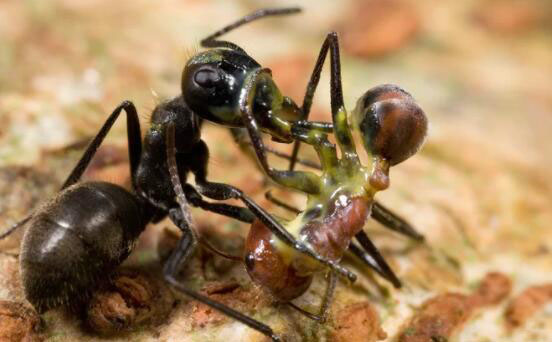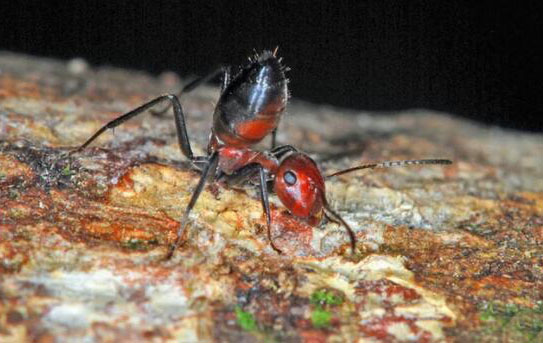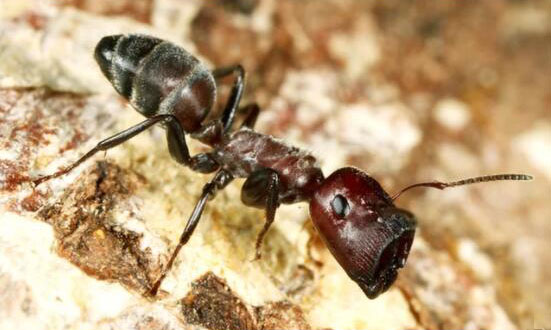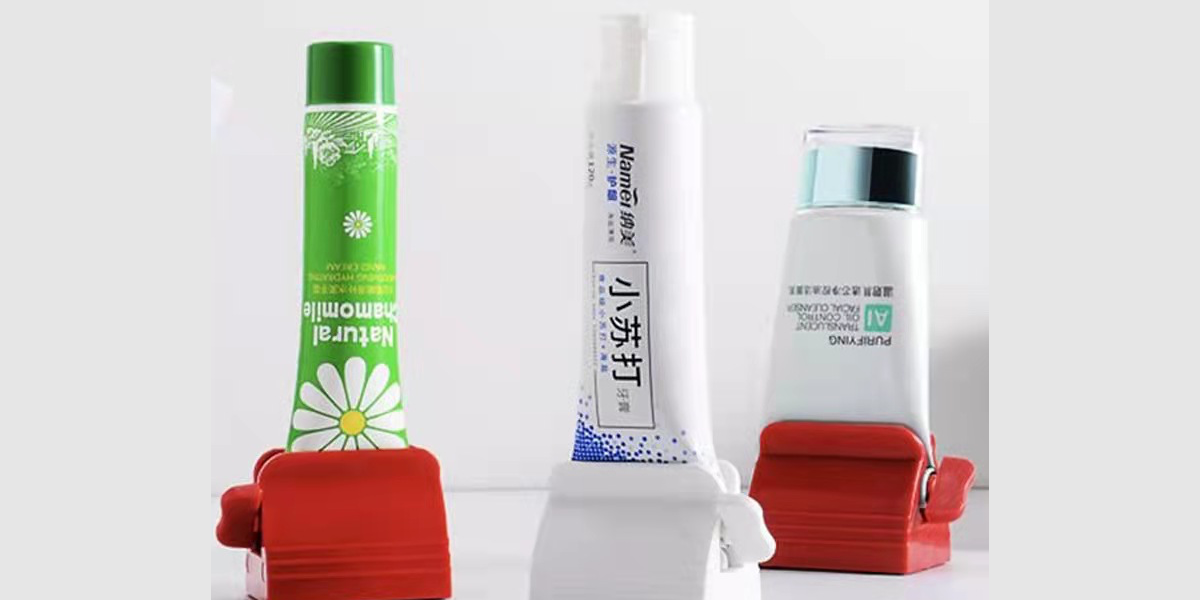In the treetops of Southeast Asian rainforests, a group of ants live with fierce defenses. They will kill their opponents by "self-destructing", and at the same time protect their fellow ants by dying with them.

These ants are often referred to as "exploding ants," whose workers, when faced with an external threat, will deliberately make their own body wall burst, spraying toxic liquid on the other side. In previous studies, the "exploding ant" is usually considered a species with the scientific name Colobopsis cylindrical, but scientists have recently discovered that there are at least 15 such self-sacrificing ants, including a new species found in Borneo.

Chemical weapons are not uncommon in the animal kingdom. Many animals store toxic substances in their bodies to subdue prey or to scare off adversaries. Members of taxa such as snakes, spiders, insects, fish, cephalopods, amphibians and reptiles, and even a few mammals, can deliver toxins into other animals through stings, bites and stings. Other animals, such as skunks, scorpions that spray venom, and fart bugs, choose to spray chemicals. In fact, fart bugs can even release a heated toxic spray after being swallowed by a predator, killing the predator's digestive system (and sometimes making a shocking escape).

However, defense by "self-detonation" is quite unusual. This process is called "autothysis" and consists of two Greek words for "self" and "sacrifice" respectively. According to scientists, this phenomenon has only been found in ants and termites.
Popular Articles
-
The world's largest bird with wings, the drifting albatross has a wingspan of up to 3.7 meters

-

Photos
The world's most beautiful big cities at nightApr 03, 2025
-
 Treadmill PK elliptical machine, which is more fat burning?
Treadmill PK elliptical machine, which is more fat burning?Apr 03, 2025
-

Photos
What are the famous mountains in the world?Apr 03, 2025
-
 Lazy artifact, fully used without wasting
Lazy artifact, fully used without wastingApr 03, 2025
-
 5 benefits you can reap from long term running, apart from losing weight
5 benefits you can reap from long term running, apart from losing weightApr 03, 2025







Comments
0